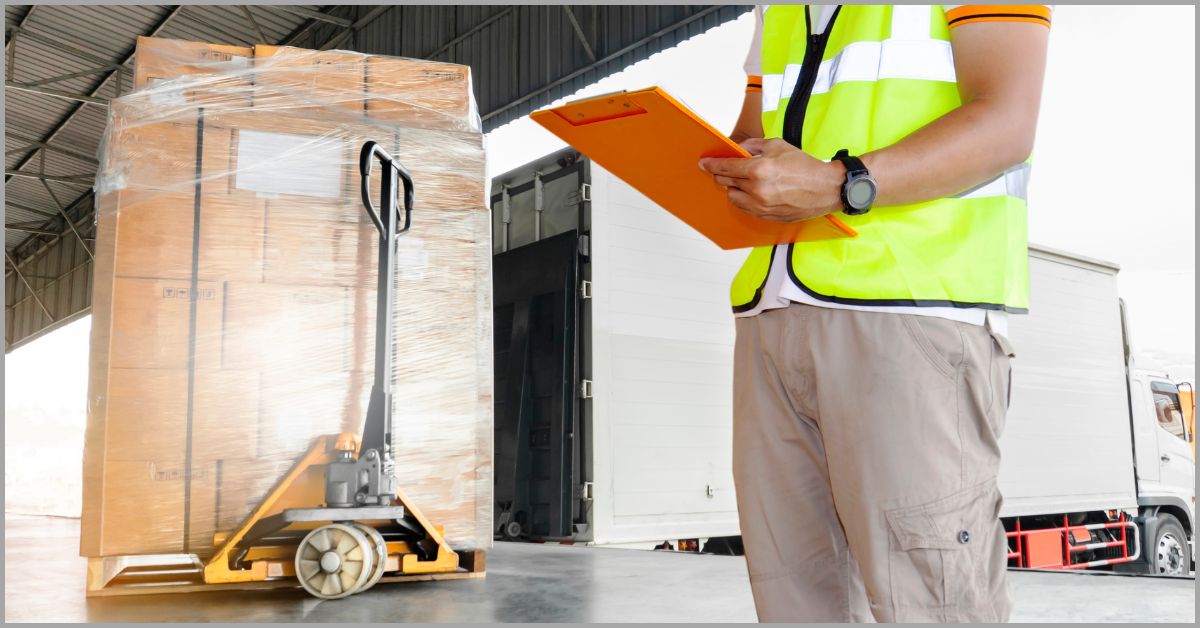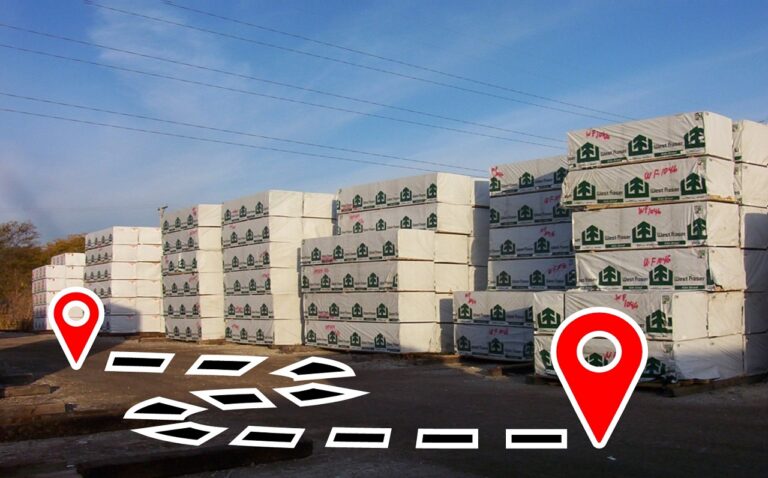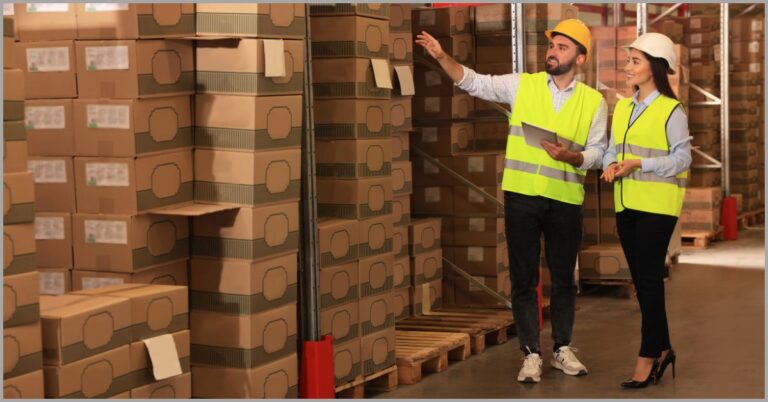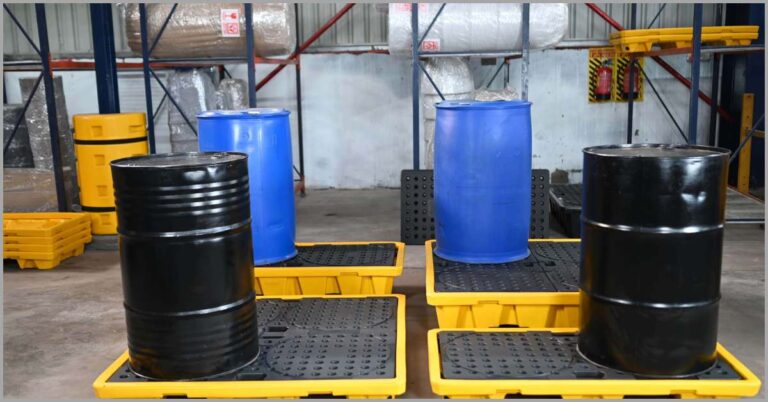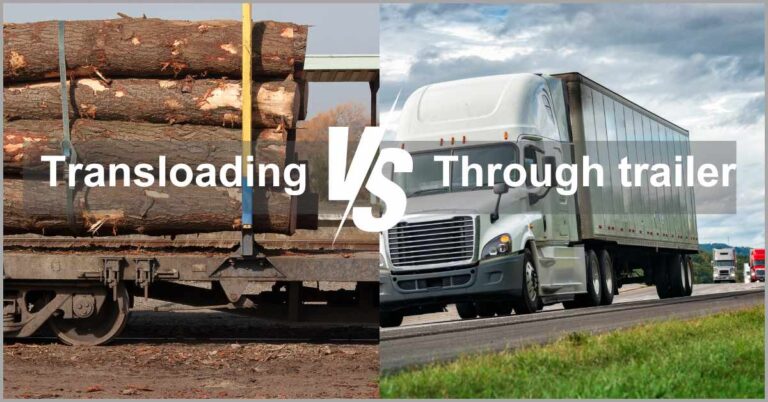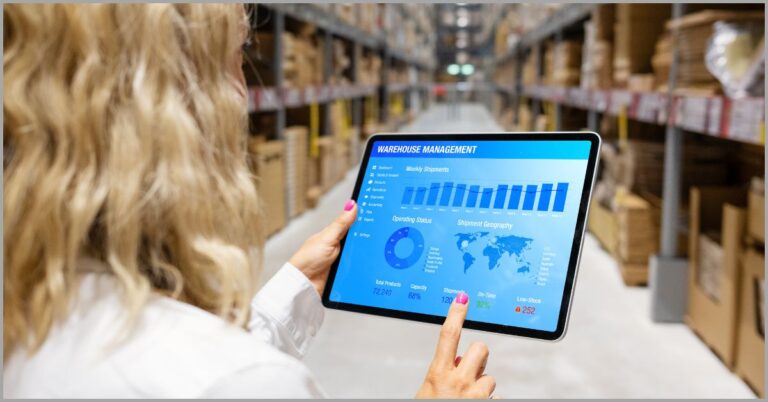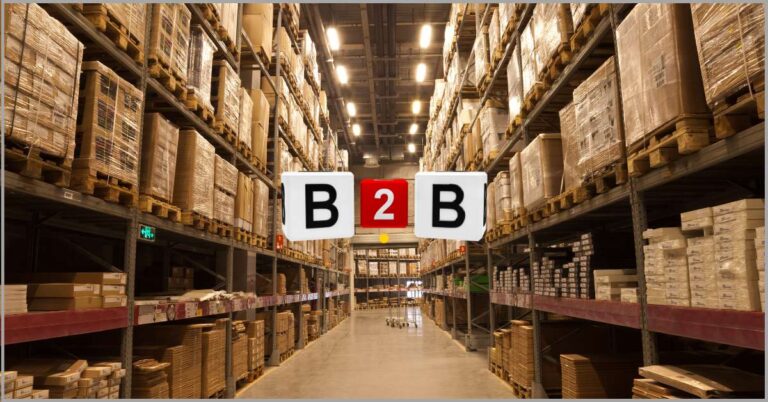What Is Transloading? 10 Key Facts and Insights You Need to Know in 2024
So what is transloading in shipping?
It involves switching goods from truck to rail or other different forms of transport.
Without transloading, you may need to ship goods across direct shipping routes that are unprofitable and also attract logistical nightmares.
In fact, transloading can save you 56% of transportation posts, according to an ECA study. So it can help make your supply chain more profitable.
You can save money by transloading since it enables you to optimally combine the enormous cost-saving benefits of hauling freight over long distances by rail with the flexibility of trucking for first and last-mile deliveries.
When managed with an excellent transloading service partner and software, you can also simplify the logistics involved to increase the efficiency and ROI of transloading.
In this article, we’ll discuss what is transloading and the key facts and insights you need to know in 2024 to help make your business more profitable.
Let’s get started.
1. It involves an exchange of transportation
So what is an example of transloading?
Imagine you’ve shipped a container from overseas. It starts the journey on an ocean vessel, but it may not be possible to complete the entire trip this way. So you switch the cargo onto rail and finally truck to the destination. This counts as transloading.
Therefore, transloading happens when you switch freight between two or more means of transport, and it can help mitigate supply chain disruptions.
You can experience a 90% decline in revenue with a 100-day disruption, according to a study by Statista. These losses largely stem from lost sales, and make a great case for the importance of transloading.
By transloading goods, you can diversify transportation to minimize the risk of disruptions raised by reliance on a single carrier.
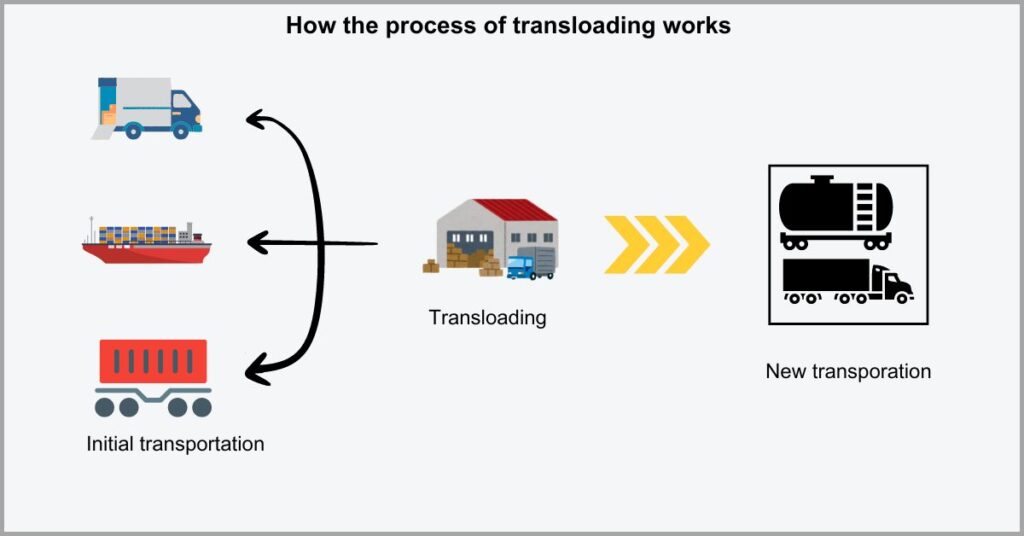
Transloading can occur in many forms.
For example, if you unload from rail to truck to deconsolidate a cargo to send out to multiple destinations or recipients, then this counts as transloading.
Alternatively, it’s also transloading when you unload cargo from truck to rail. This can happen for instance, when you get lumber from a milling facility without rail, transport it to a rail yard, switch to a rail car, and then ship it out to the destination.
That said, transloading also occurs when you transfer goods from one truck to another.
By embracing transloading, you can leverage efficient shipping routes and escape other challenges such as port congestion and traffic jams. In doing so, your business keeps its supply chains fast and efficient.
2. A transload yard may have a storage facility
Do transload yards have a warehouse?
In many instances, the transload yard may receive goods well before pick-up is due and they’ll need to store it temporarily. Alternatively, it may need to process and deconsolidate cargo from one shipment into multiple, smaller consignments.
Without a transloading warehouse where goods are safely stored and processed, transloading operations can slow down, thereby causing driver detention.
In recent times, there has been a 40% increase in driver detention cases, going by an ATRI study. This led to transloading facilities, shippers, and receivers parting with a huge amount of money to pay detention charges.
As a result, a transload yard will typically have a transloading warehouse that facilitates quick processing and the safe storage of freight.
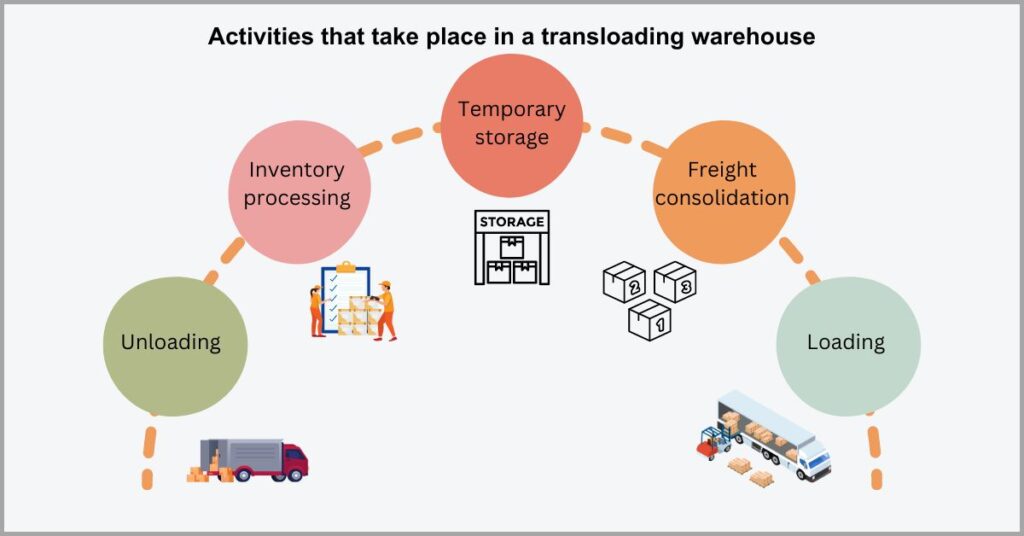
So how can a warehouse reduce driver detention?
This provides a place where you temporarily store goods as they wait for pick-up. Typically, if you use a transload service, your goods will be first received at this warehouse or storage facility.
Then, using a great transloading software, they’ll coordinate yard workers to load or unload shipments to and from rail or truck accordingly.
Beyond safeguarding goods between transit, the transloading warehouse also serves another very important purpose – freight deconsolidation.
Other times, smaller reload yards may lack a warehouse but at the very least they will have a staging area or a distribution center. It can be outdoors, and it enables staff to perform efficient loading and unloading operations to wait times for drivers.
3. You can transload various commodities
You can transload just about anything.
In many instances, the type of commodity you’re shipping will also affect your choice of transportation. Different types of goods may be suitable for different types of transportation depending on various unique factors like weight, shape, and fragility.
If you combine commodities with the wrong choice of transportation, this can inflate shipping costs by not maximizing container utilization.
A study by FlexReport revealed a 65% average rate for container utilization in the US shipping industry. This is not good enough as it points to significant waste, with one of the key reasons behind this being the poor packing of commodities.
However, through transloading, you can combine cargo more strategically and even consolidate freight targeting multiple consignees to increase container utilization.
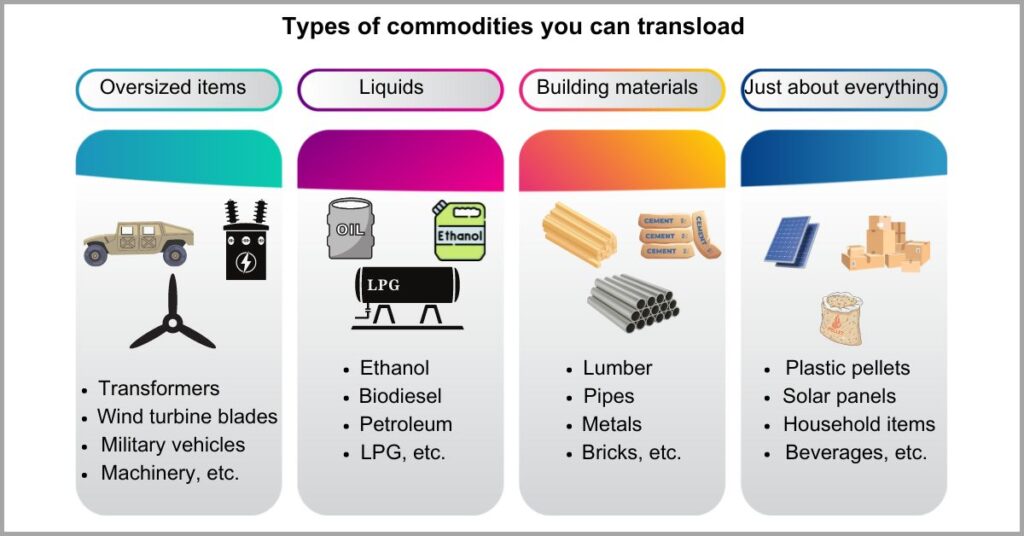
So what types of cargo can you transload?
One of the common goods to transload is lumber, which is a processed form of timber with uniform shapes. We often transload lumber to a flatbed truck or rail and vice versa for easy transportation over long distances.
You can also transload metals, agricultural products, building materials, palletized goods, and even very heavy machinery. Transload operators typically use cranes, forklifts, and conveyors for efficient and safe loading.
In the transload business industry, it’s also common to transload gasses and liquids, and in this case, you’ll use pump technology to enable the transfer of cargo.
Transloading is overall a great option for shipping different types of items and there’s really no limit to what types of commodities you can transload.
4. Truck and rail transloading is most popular
You can transload goods across different forms of transport.
However, not all choices of transportation are ideal for every instance. When you need to haul goods over long distances, for example, using trucks may be a more expensive solution compared to rail.
From handling smaller quantities of goods to using more fuel, truck transportation can inflate the cost of shipping significantly.
A study by TSGD showed that 88% of freight cargo moves by rail or truck, with less than 12% delivered by water. In other words, rail and road transport are the most popular ways to move cargo.
If that’s the case, then it’s not farfetched to conclude that a similar number of transloading operations involve switching freight between rail and trucks.
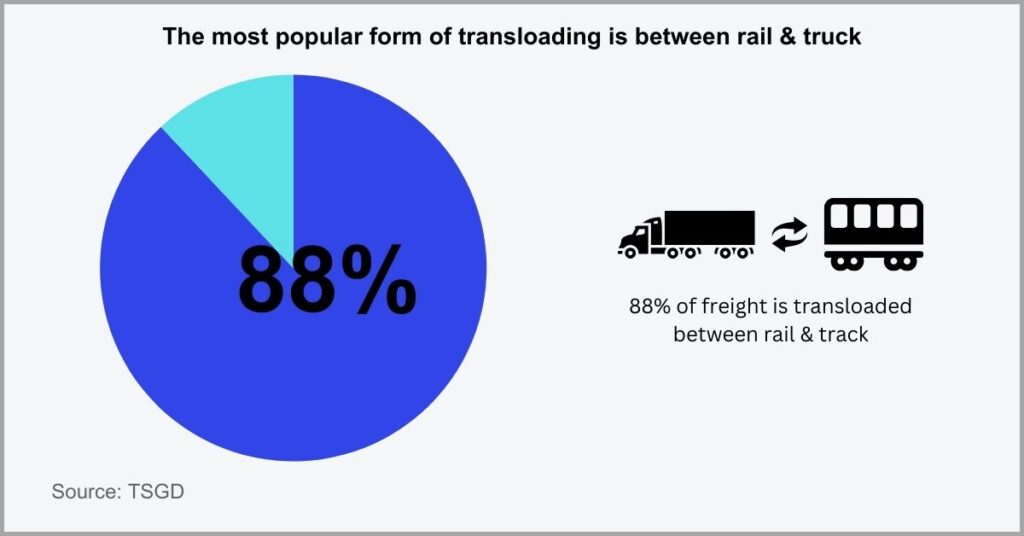
So why is transloading to rail popular?
That’s because you can greatly improve transloading ROI by shipping goods in higher volumes without needing to break them up into separate trucks. So you can transport a large amount of shipment in one go, which certainly saves you money.
This is why you’ll see many retailers bundle up to consolidate their orders when acquiring cargo from the same manufacturer.
Transloading also negates the need to build new supply chain infrastructure by leveraging that of established players, like rail companies, for lesser fees.
Additionally, rail also has fewer fuel costs and fewer rest stops, and therefore less driver idling time, over long distances compared to trucking. This is another reason why transloading from truck to rail is most popular.
5. It leverages special equipment
You can choose to transload goods by hand.
While this works for smaller and less fragile cargo, it may not be possible or it may be very challenging to do so for certain types of commodities such as those that are very heavy, bulky, or liquid in nature.
What’s more, manually offloading and loading goods by hand also increases the risk of damage, and requires a huge amount of costly, manual labor.
It’s interesting to note that 85% of yards use special equipment and yard management solutions to run their operations, according to an LM survey. These tools and technologies have made their work easier and boosted productivity.
They have also helped prevent workplace injury and ensure the proper handling of goods to minimize freight damage.
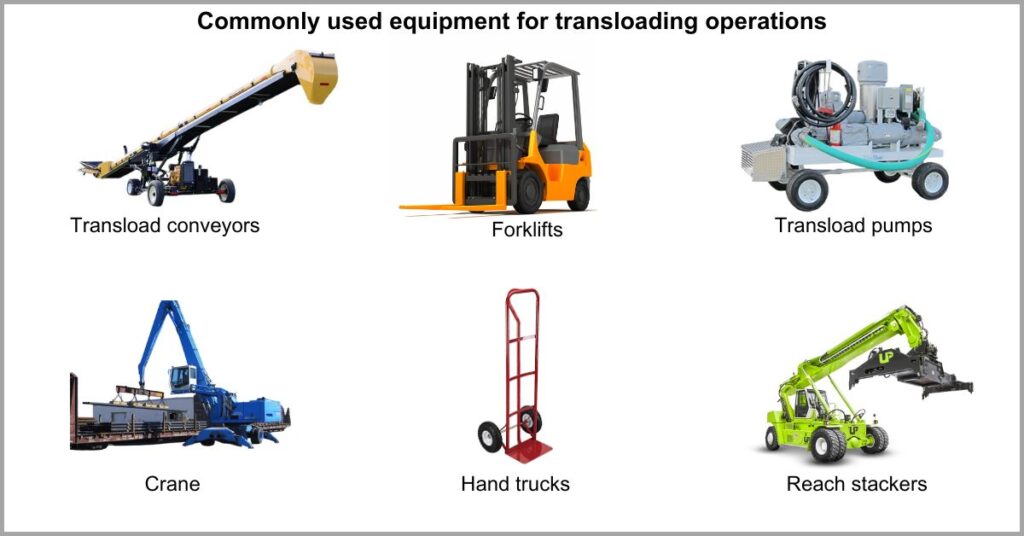
So what equipment & technologies do transloading facilities use?
First, they may have a mobile yard management system to help coordinate operations.
You’re also likely to encounter a forklift, which helps to move palletized freights efficiently and safely. In cases where product spillage is a concern, conveyors are ideal. They slide under railcars and help you transfer dry bulks and minimize spillage.
When you need to lift very heavy loads like oversized steel beams, transload operators call in cranes to make the work easier. However, cranes are usually a last-resort measure as they are very expensive to operate.
Additionally, you may also find a transload pump in a transloading yard. These typically attach to rail cars via valves, enabling the seamless transfer of liquid products.
6. Transloading requires special expertise
Transloading necessitates special skills.
Just like any other job, you need special know-how and skills to carry out transloading. You may need to have knowledge about operating certain types of machinery, and perhaps a logistics background for smooth coordination.
Without skilled transloading operators, managers, and dock workers, transloading tasks may not proceed accurately, safely, or efficiently.
In a survey by Descartes, 89% of supply chain managers said that having very skilled professionals in place greatly boosted the performance of their warehousing and transloading operations. This proves the need for competent transloading personnel.
With the right experts in place, a transloading yard can reduce delays, maximize efficiency, and boost throughput. Therefore, they can take on higher shipment volumes and improve the profitability of their yards.
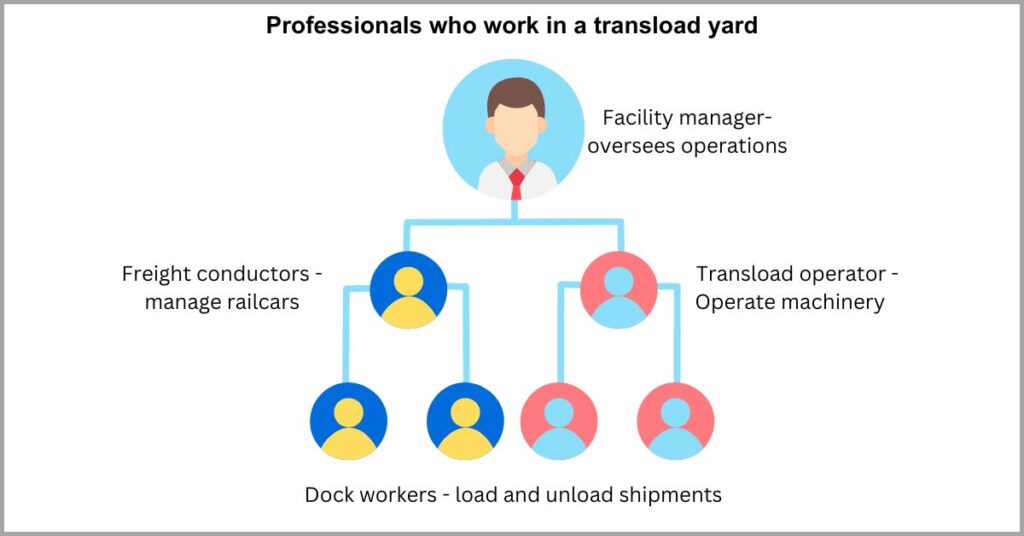
So who works at a transloading yard?
At the very top of the hierarchy is the transload facility manager or business owner.
If you were in this position, your job would entail yard location management, covering all the different transloading terminals under your care. You’ll manage employee operations and generally oversee facility efficiency and safety.
On the opposite end of the spectrum, you have a warehouse worker, also known as a lumper or dock worker.
They wear many hats, including verifying shipment quantities and operating forklifts and other transloading machinery.
You may also have a freight conductor, who specifically coordinates railcar positions for seamless unloading and loading. Moreover, there’s a transload operator who also helps transload goods in coordination with warehouse or dock workers.
7. It can help you reach new markets
Struggling to grow your business?
As a local store, your market may be confined to customers you can actually reach. So those outside your geographical region remain an untapped source of revenue.
Yet, setting up new and extensive supply chains is very expensive, so much so that it can negate any revenue gains that you get from expanding.
A study by Inspectorio found out that 54% of businesses say their biggest challenge in supply chain management is growing and scaling their supply chains. This is partly challenging due to inadequate infrastructure and the expenses that come with scaling.
Consequently, their market reach remains very limited, and they fail to fully tap into the profit potential of their businesses, thereby slowing down growth.
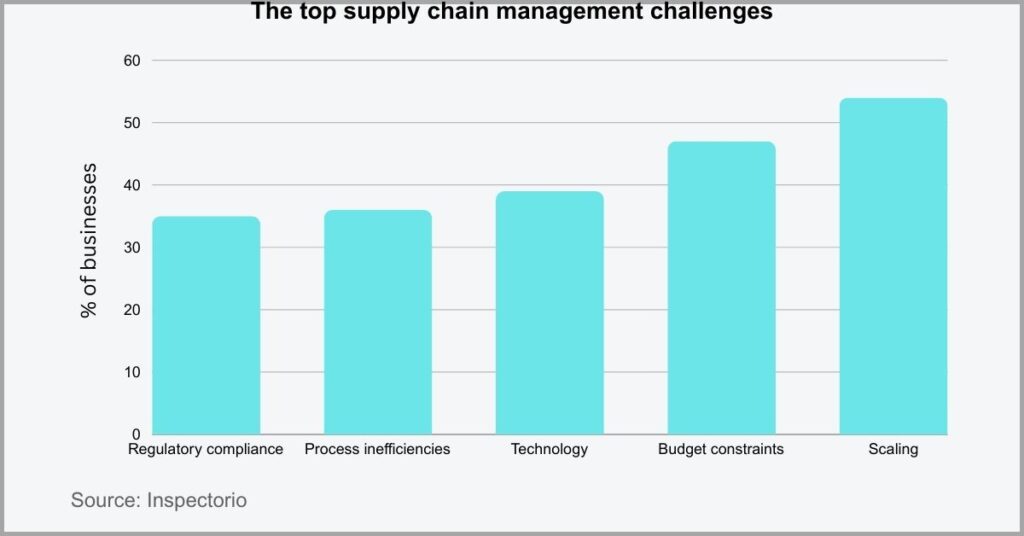
Well, that’s where transloading saves the day.
By transloading, you can essentially use the transport networks you need without the initial capital investments necessary to build supply routes from scratch. You can rely on other player’s infrastructure to get your goods to new retailers and markets.
So transloading can help expand your supply chain cost-efficiently, enabling you to create new revenue sources.
Do you need help growing your business?
At transloads.co, we provide premium support services including marketing.
If you’re just starting a transloading yard and need to generate revenue or growth has flatlined and you’d like to bring in new customers, we can be of assistance. We can help you reach new clientele, generate new business, and achieve your business goals.
8. Transloading has its challenges
Transloading is not always flawless.
In some cases, especially if you don’t coordinate the process well enough, transloading can be very challenging. It can lead to shipment delays, and sometimes the poor handling of goods may result in freight damage and cargo rejection.
Without a great way to organize the logistics and resources around it, the transloading process can also result in additional handling costs.
A survey by FourKites revealed that 41% of transloading facilities face logistic challenges from manual operations. This has decreased their overall productivity and slowed down routine work while decreasing efficiency and inflating operating costs.
So while transloading is beneficial, it has significant challenges that we need to address if you’re to make it a worthwhile proposition for your business.
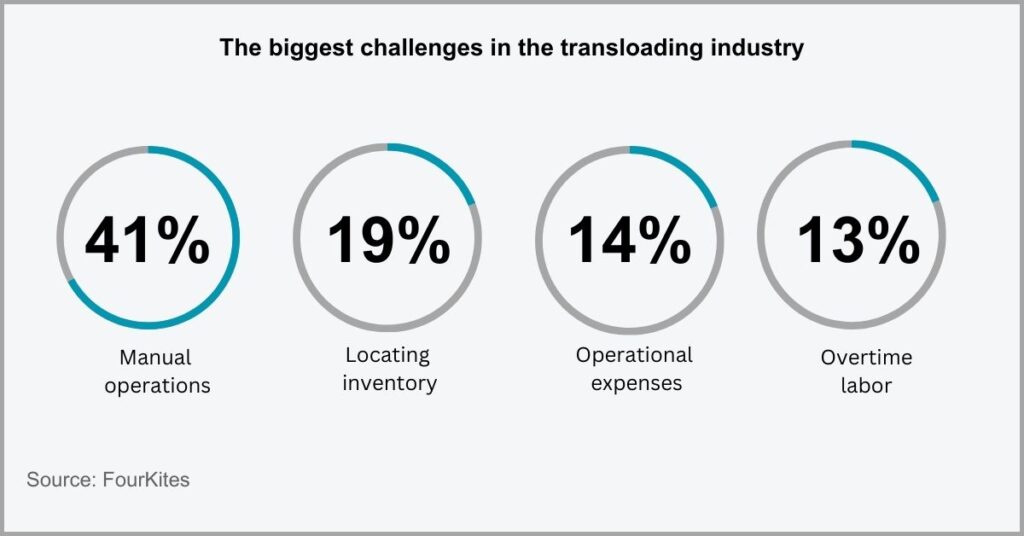
So how do you go about addressing these issues?
You can easily solve the challenges of transloading with a top transload management system.
It can help you coordinate dock workers, transload operators, managers, and docks, among other resources in your transload yard, better. In turn, you’ll cut out unnecessary delays and solve process inefficiencies to speed up transloading throughput.
When you choose a great transloading software, it becomes easy to ensure field crews follow proper handling procedures depending on the nature of the cargo. As a result, this will reduce the risk of freight damage.
The point, however, is that transloading has its challenges just like any other shipping strategy but meticulous coordination is key to a successful transloading process.
9. It’s great for the environment
Transportation is a big factor in climate change.
If you ship goods using heavy-duty diesel vehicles like trucks, or even airplanes and ocean vessels, you’re adding nitrous oxide and particulates into the atmosphere. This, in turn, contributes to the global warming effect.
Whenever the shipping of goods is not optimal, this can result in more greenhouse gas emissions which only accelerates climate change even more.
A study by the UN revealed that trucks contribute 80% of CO2 emissions caused by heavy-duty vehicles. This shows that using trucks alone to transport cargo over long distances has a very significant and negative impact on the environment.
As a result, it strengthens the need for businesses to use transloading measures to help combat climate change.
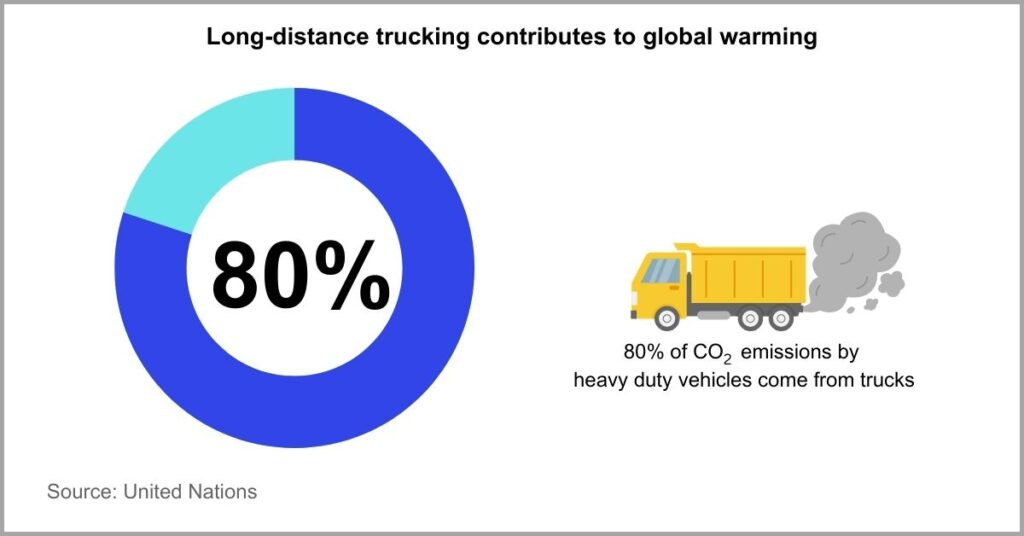
So how is transloading beneficial for the environment?
If you transition from truck to rail during the shipping process, this goes a long way to reducing road congestion. When this happens, it can lead to a significant decrease in traffic jams and the mass emission of carbon dioxide.
Transloading can also merge shipments from multiple sources into one railcar, which uses less fuel than the combined trucks it would take to ship the same amount of cargo.
In turn, this lowers fuel consumption and reduces greenhouse gas emissions.
You also get other important benefits as a business, because you’re able to develop an eco-friendly brand image. This can help make your business more attractive to investors, employees, and customers, thereby giving you a competitive advantage.
10. The cost of transloading
So how much does transloading cost?
As a business, it’s important to understand the cost of any project before you dive head-first into a new concept. Otherwise, it may mean lost time and money.
If you fail to understand the cost associated with transloading, this can also lead to unexpected expenses that only hurt your business’s cash flow.
In fact, you can spend up to €100.52 in loading fees for dry bulk shipments, according to a study by the Netherlands Institute for Transport Analysis. They proceeded to add that it would cost you a similar amount to unload this cargo, thus doubling the initial cost.
It’s therefore important to understand the costs involved in transloading to perform more informed cost-benefit analysis for your business.
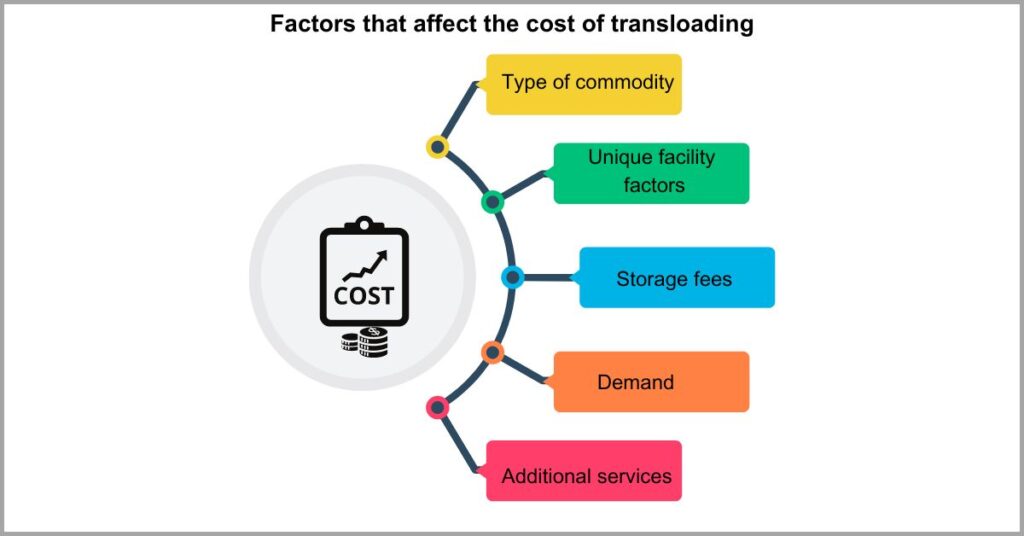
A lot of factors influence the cost of transloading.
The first is your choice of transloading facility. Of course, different facilities will charge different rates depending on their experience and expertise, and so pricing will vary from one yard to the next.
Warehouse storage also comes into play if your cargo will need to be stored awaiting picking, with these rates typically calculated depending on the type of commodity.
Other factors that affect transloading costs include whether you’ll need other additional services such as cross-decking, for instance.
That said, you can generate excellent ROI from transloading if done right.
It can help reduce your transportation costs, given that a single rail car can hold up to four trucks worth of load, so it’s a case of spending money to make more of it.
Conclusion
Transloading entails a lot of logistics.
You need to synchronize yard resources, process shippers’ paperwork, and perform cargo inspections, among many other routine tasks.
With poor logistics coordination, transloading can cause delays, attract additional handling fees, and instigate massive supply chain disruptions.
A study by Vector revealed that 47% of yards struggle with logistics, identifying it as a top reason for embracing transload management solutions. This largely stemmed from manual paperwork that created huge logistical headaches.
In other words, the key to making transloading more efficient, safe, and profitable greatly depends on having a transload management system in place like transloads.co. If you run a transload facility, our software can help turbocharge efficiency.
Click here to start your free transloads trial to streamline your transloading operations and increase client satisfaction.
With our software, you’ll track inventory with ease, improve your invoicing process, and decrease time spent on document work to help grow your business.

